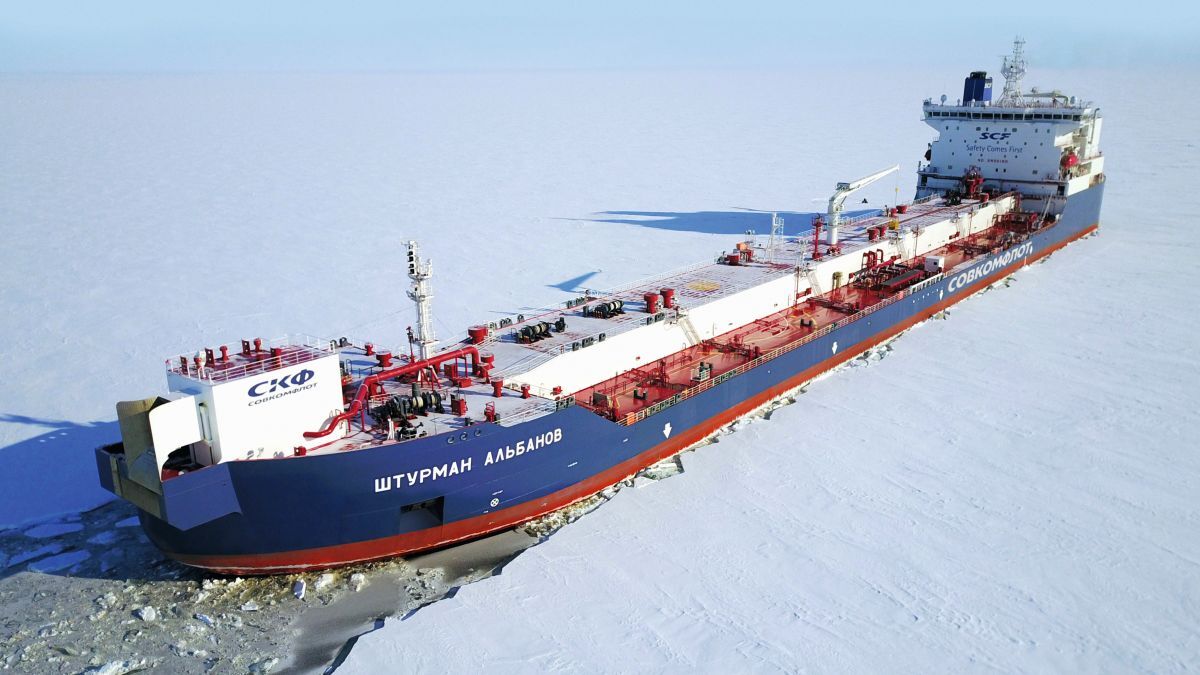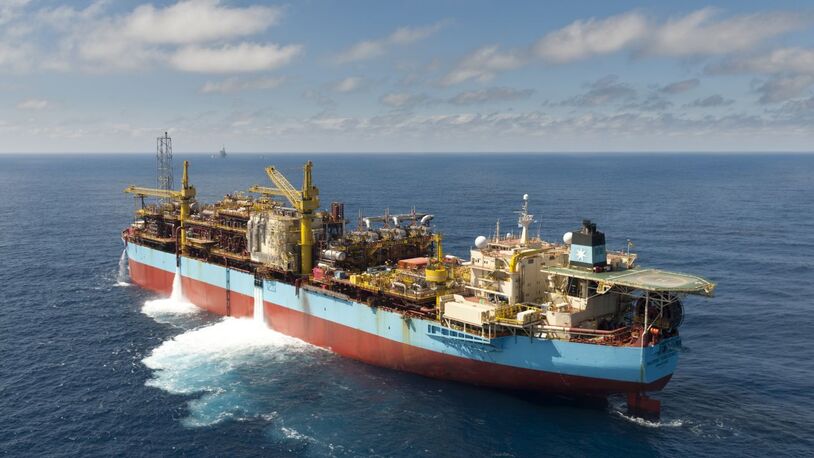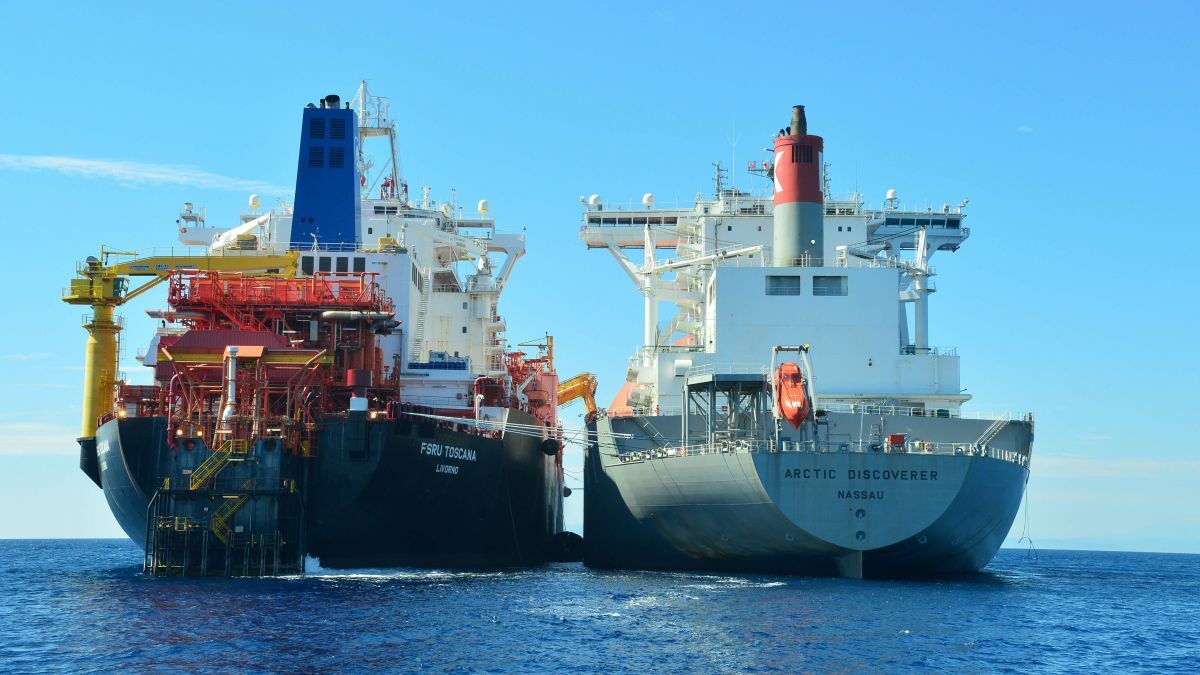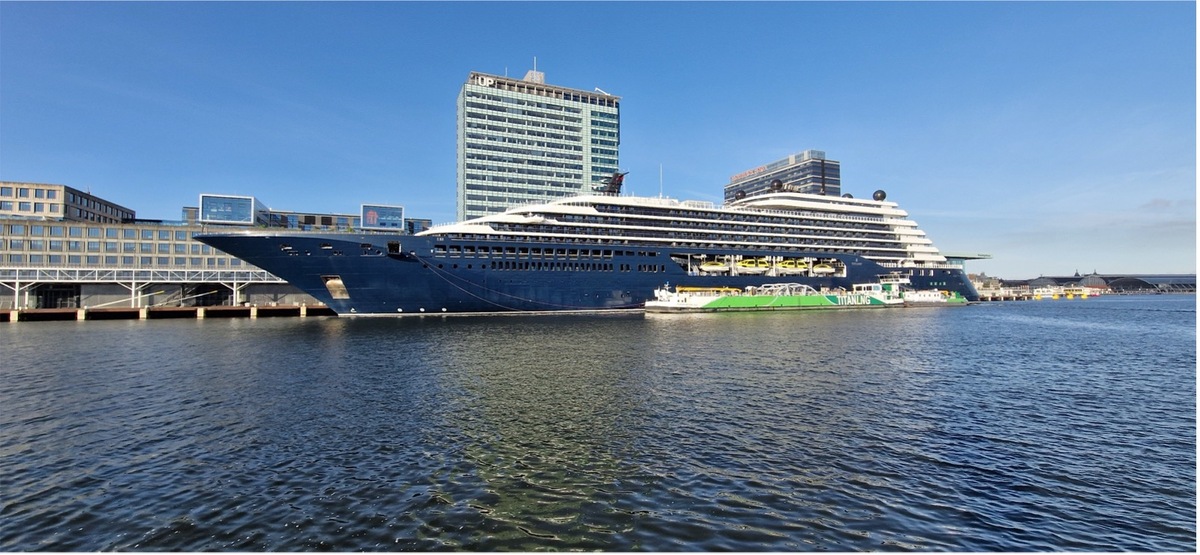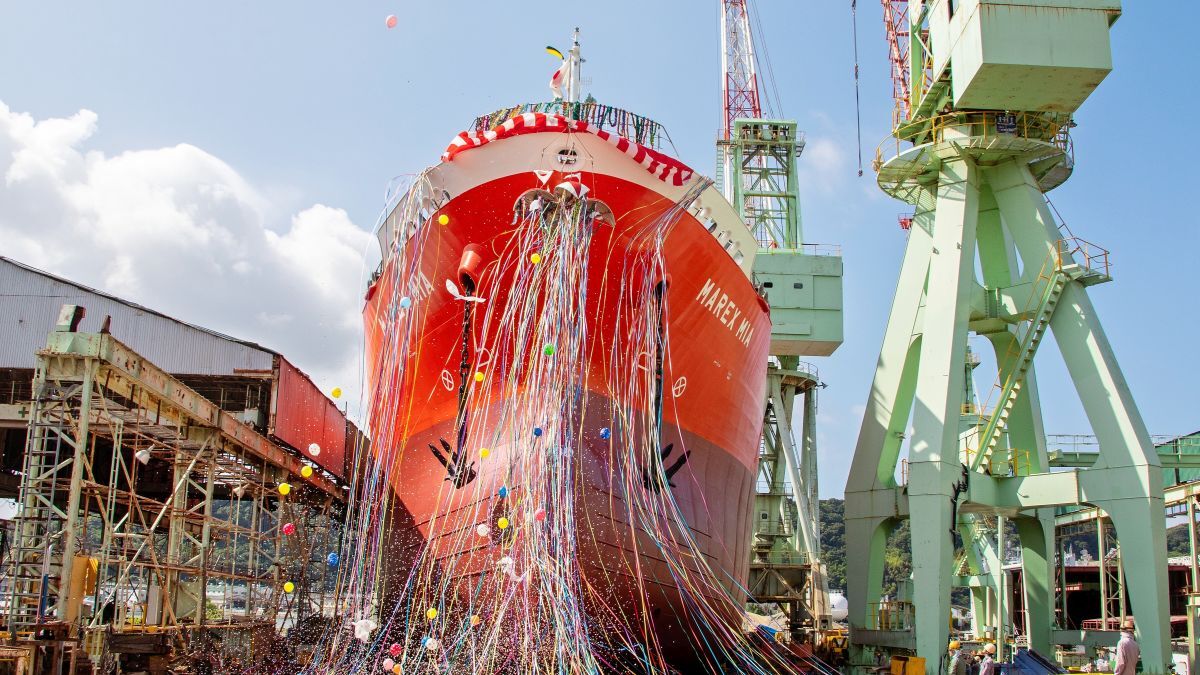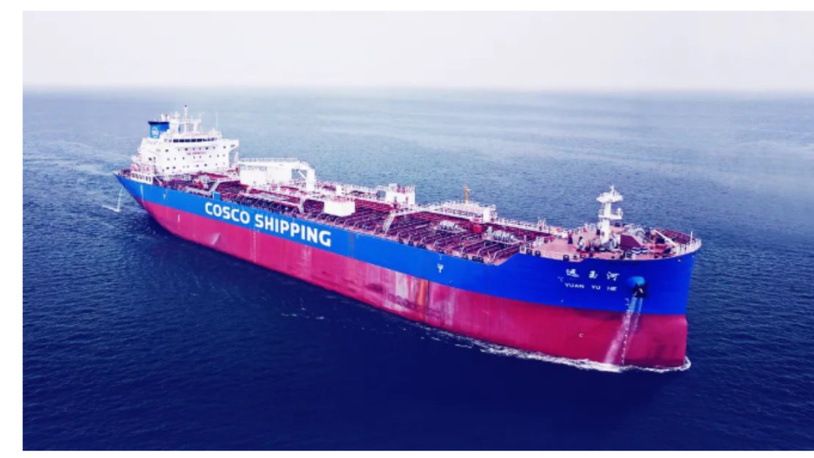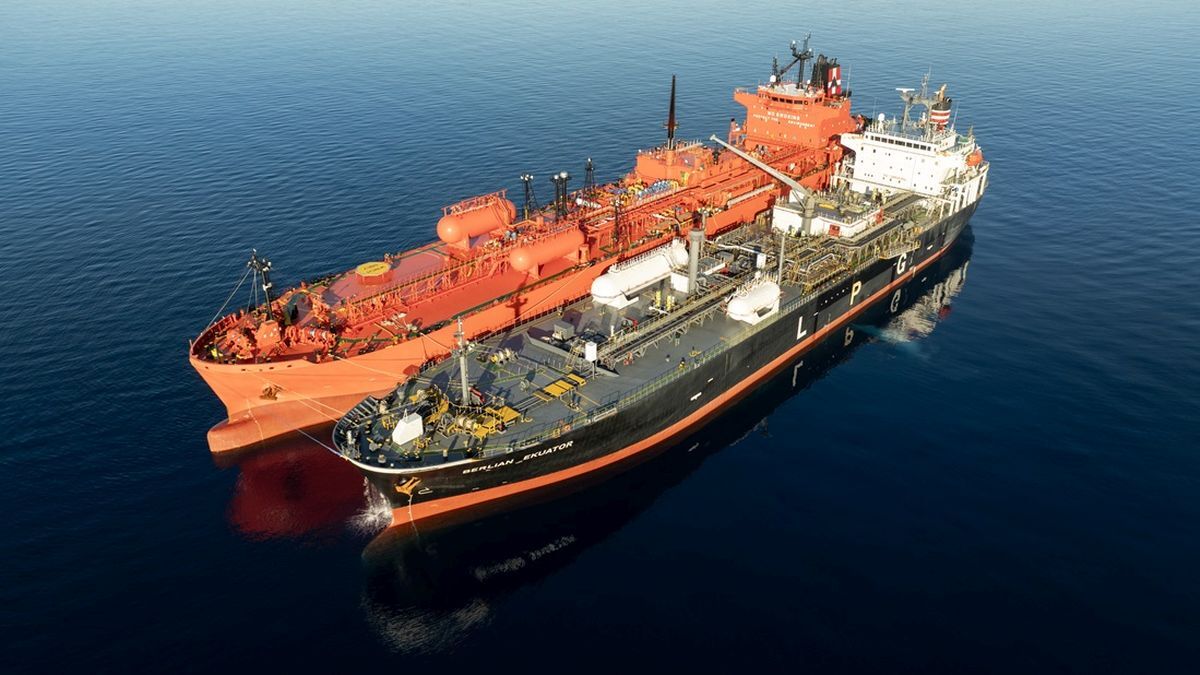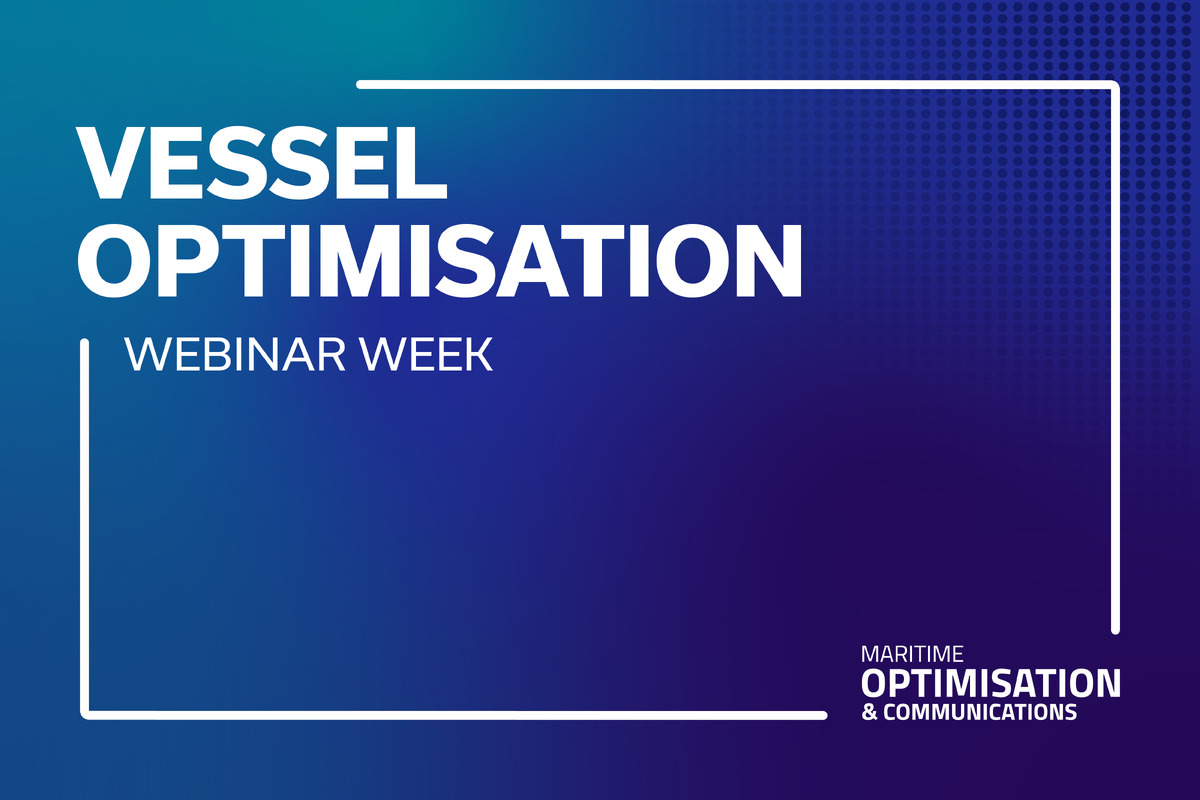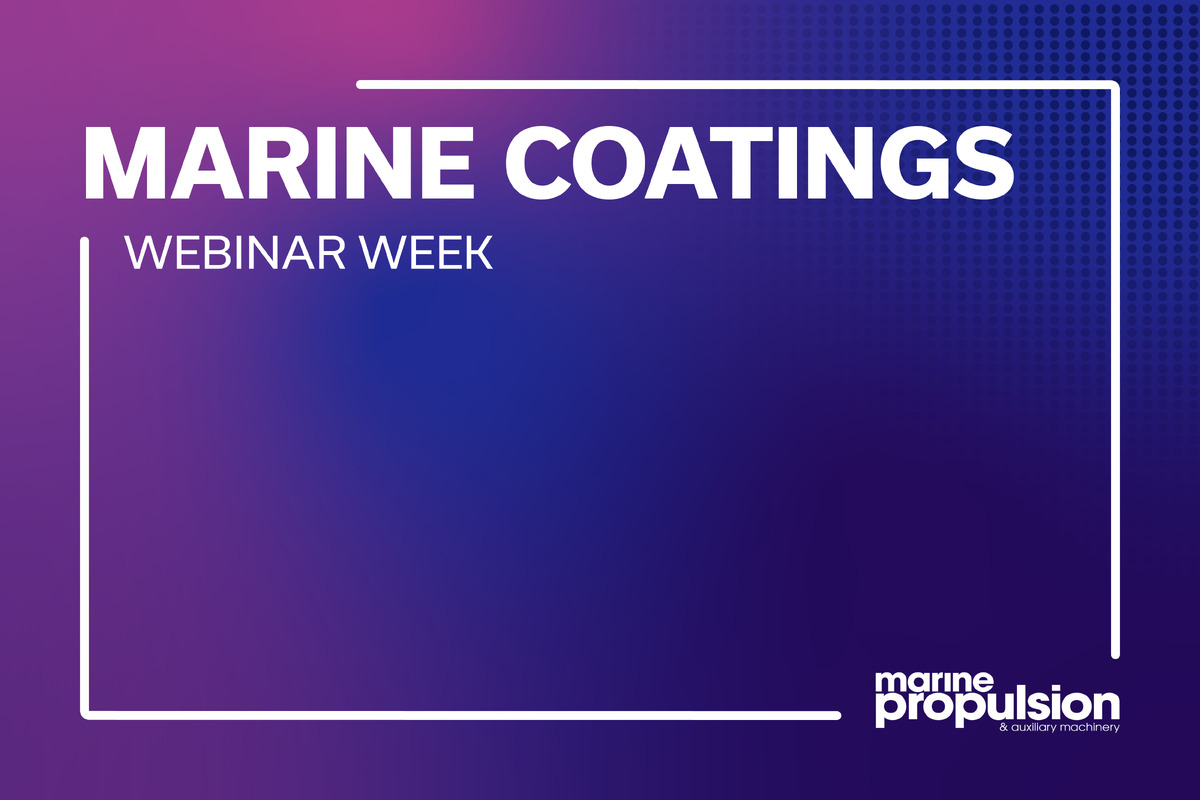Business Sectors
Contents
Ice navigation: the expert’s view
With the use of ice passages growing, Alexander Andreev, adviser to president and chief executive officer of Sovcomflot (SCF Group), explains how to manage navigation in such treacherous conditions
SCF’s ice class shuttle tankers were designed to be used within the relatively heavy ice of the Arctic region. They operate all year-round and therefore encounter a variety of ice conditions. Ice navigation requires the continuous updating and refinement of data. Such data is used to provide ice safety recommendations for all SCF’s tankers. In this way, together with advice on safe speeds and the use of sensing technologies, it is possible to dramatically enhance the safety of ice navigation.
A real challenge with ships in ice is their response and the forces arising from any alterations in the direction of ice drift, mainly caused by changes in the speed and direction of the wind and current. Ice breaks along large parts of a ship’s waterline, due to changes in the direction of the ice drift. A vessel’s waterline geometry varies a lot around its perimeter and thus ice breaks in various different failure modes (eg whether through crushing, bending etc) at different points along the hull. These failure modes change according to the relative angle between the vessel’s heading and the ice drift direction and influence the response of a ship and the forces applied by the ice.
According to a vessel’s ice-going properties, admissible and maximum speeds of ship movement can be calculated, under certain different ice conditions, corresponding to either a safe or attainable speed – whichever is lower.
Meanwhile, when using information from emerging electronic navigation technologies, such as ice chart radar and incorporated information on ECDIS screens, it is imperative that a ship’s master is fully acquainted with the capabilities and limitations of such information.
Icebreakers play a significant part in the effective management of ice. Where ice conditions are relatively severe, with ice thicknesses up to 1.5 m and ridge keels down to 5 m, SCF’s vessels are sometimes supported by icebreakers, to reduce the ice action and maintain a safety margin. Operating in an ice channel gives exposure to all kinds of ice floes forming the ice field, information which is used to determine the safe speed within a channel. Although a 230 m distance behind the icebreaker should normally be maintained, actually it is near impossible to measure the vessel’s position with such precision. The maximum icebreaker escort distance is ultimately determined on the basis of the prevailing ice conditions, and the distance at which the track will remain open or nearly so. Increasing this distance runs the risk of a vessel becoming beset, requiring an icebreaker to free her.
“The maximum icebreaker escort distance is ultimately determined on the basis of the prevailing ice conditions”
An important step is maintaining the optimal escort distance – vessel masters are requested to maintain the required escort distance astern of the icebreaker, to the best of their ability. The progress made depends largely on maintaining the correct distance. The optimal distance is dictated by the existing ice conditions and the risk of collision with the escorted vessel overtaking the icebreaker.
When an icebreaker makes contact with ice floes, blocks and small floes will break off. Most tracks made by icebreakers will contain ice rubble, which may also contain floes, which could damage an escorted vessel travelling at excessive speed. At high speed, the floes will be shattered into many pieces. The icebreaker therefore proceeds at a speed which will break floes into as many pieces as possible, thereby increasing the possibility of a ship following in the track. Masters are cautioned that because of unexpected ice conditions, or in other emergency situations, the icebreaker may stop or become trapped without any notification. Masters must therefore always be prepared to take action to avoid overrunning the icebreaker.
The geometry of the part of the hull interacting with ice will vary greatly for ships in ice moving in varied directions. The incoming ice will experience different failure modes, depending on the relative ice direction and its size. It is therefore important that all potentially dangerous ice floes are watched carefully. Such ice floes are relatively easy to search for in daytime, but their technical properties are more challenging to ascertain, being difficult to measure and predict if they pose a genuine threat to the tanker.
The interactions between a ship and ice are complex but there is general agreement on how to manage them. Broken or managed ice (keeping free surface/way) is perhaps the most relevant ice condition regarding operations. Actions from big ice ridges may cause the highest loads on tanker operations, and it is crucial to estimate ridge actions with a high degree of accuracy.
The desired result of carefully planned and properly executed ice management, by one or more vessels, helps modify the ice environment along the way. The aim being to ensure no hazardous or restrictive ice interactions, which would affect a tanker’s ability to maintain her position with safely and efficiency.
Within an ice convoy, the lead vessel should have especially experienced personnel onboard, to provide the first assessment of the ‘manageability’ of the incoming ice and coordinate the other ice management ships. This lead vessel is responsible for the ‘first response’ to approaching ice, for example, large heavy floes.
High-speed hazards
Ice management techniques that involve icebreaking are most effective when carried out at high speed. However, it is important for operators to consider the following: potential damage when determining maximum icebreaking speeds. For example, high speed must be limited to that which is safe for the vessel’s ice class specification. In addition, icebreaking at high speed can increase the amount of ice/propeller milling experienced; sharp high-speed turns, carried out in heavy ice, will increase ice interaction (and potential damage) with steering equipment; in well-managed ice, care should be taken to monitor engineroom cooling water temperatures, since slush and small pieces of ice drawn into the engine cooling intakes can cause rapid overheating, resulting in a sudden propulsion shut down and machinery damage; the ice force placed on the bow of a vessel pushing a large floe can be significant; and the size and thickness of the floe, the age of the ice (in terms of its hardness), and the power used by the ship to achieve the desired deflection away from the tanker being protected.
Conclusions
There can be no substitute for the experience of a master and the vessel’s crew when operating in ice conditions. This, combined with appropriate hardware and the judicious use of technology, is the secret of safe and efficient navigation in ice. Sometimes an obsessive desire to innovate and integrate new technology and systems can be counter-productive. While new technology and systems can certainly assist, in the end safe ice navigation comes down to crew training and the development of relevant expertise. SCF’s philosophy that ‘Safety Comes First’ is never more appropriate than when navigating in ice.
Related to this Story
Orderbook tilts to alternative fuels as deliveries rise
Events
LNG Shipping & Terminals Conference 2025
Vessel Optimisation Webinar Week
Marine Coatings Webinar Week
© 2024 Riviera Maritime Media Ltd.


